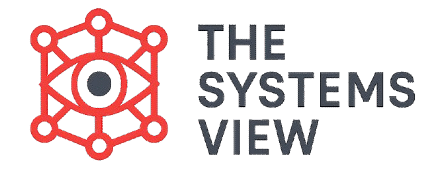If you have ever felt confused, paralyzed, and trapped by someone’s mixed messages, you may have been caught in a systemic communication trap. The most famous of these traps is the Double Bind.
The Double Bind was developed by anthropologist Gregory Bateson and his research team in the 1950s. They used Cybernetics to analyze communication patterns in families, particularly those of people struggling with severe mental illness. Bateson’s team realized that the problem was often not the individual person, but the structure of the communication environment itself.
The Double Bind is a communication paradox that paralyzes the receiver. It provides a simple, devastating explanation for why inconsistent communication is so harmful to the human mind.
1. The Anatomy of a Double Bind
The Double Bind is a specific, damaging pattern that requires three essential conditions to be met. It is not just a mixed message; it is a communication trap with no escape.
Condition 1: Two Contradictory Commands
The message must contain two commands that completely cancel each other out. The commands exist on different levels of communication.
- Verbal Level: The spoken words are one command.
- Non-Verbal Level (Metamessage): The tone, body language, or context delivers the opposite command.
- Classic Example: A mother tells her child, “I love you,” but simultaneously pushes the child away or delivers the words with a look of disgust. The child is commanded to A) Accept the love and B) Reject the hypocrisy.
Condition 2: The Command is Unavoidable
The message must come from a person with whom the receiver has an intense, necessary relationship, usually a parent, boss, or spouse. The receiver cannot simply ignore the message or walk away. Their survival, stability, or identity depends on responding correctly.
Condition 3: No Escape or Comment
The final and most devastating condition is that the receiver is forbidden, implicitly or explicitly, from pointing out the contradiction. They cannot say, “Your words say one thing, but your body says the opposite.” The contradiction must be accepted as reality.
2. The Result: Systemic Paralysis
When all three conditions of the Double Bind are present, the receiver is put into an impossible situation that causes systemic paralysis.
No Correct Feedback Loop
The Double Bind destroys the system’s ability to use a negative feedback loop for correction.
- If the child responds to the verbal message (“I love you”), they are punished by the non-verbal message.
- If the child responds to the non-verbal message (the disgust), they are punished by the verbal message (“Why are you being distant?”).
The human mind, which is a goal-seeking system, can find no correct response to reduce the error signal. All actions lead to punishment, and the entire system locks up. The mind is constantly searching for a pattern that does not exist.
Learning Not to Trust Communication
The long-term effect of continuous double-bind messages is the destruction of the person’s ability to trust communication. The person learns that words and patterns are inherently unreliable. This creates a deeply unstable environment for thought.
3. Paradoxes in Broader Systems
The systemic nature of the Double Bind reveals that paradoxes are not just personal flaws; they are often the result of flawed system design.
The Tyranny of Delegation
In management, a common Double Bind is the command: “Be creative and take initiative, but make sure you follow every procedure exactly.”
- Command 1 (Initiative): Requires breaking or questioning a procedure.
- Command 2 (Procedure): Forbids breaking or questioning a procedure.
The employee is unable to implement a successful feedback loop. If they take initiative, they are disciplined for breaking rules. If they follow the rules, they are disciplined for not being innovative. The system is designed to fail.
The Cybernetic Solution
Cybernetics provides a solution not by analyzing the people, but by changing the rules of the system. The solution to a Double Bind is always to introduce the missing metacommunication. This means making the trap visible and commenting on the contradiction.
- Example: Saying, “I cannot fulfill both the demand for initiative and the demand for absolute compliance. Which is the priority?” This forces the control system to resolve the contradiction.
The Key Insight: The Double Bind is powerful proof that communication is control. When a system transmits contradictory information that cannot be escaped or questioned, it traps the receiver’s mind in a paralyzing, inescapable prison of self-destruction.
Conclusion
The Double Bind is a devastating systemic communication trap that destroys the mind’s ability to use feedback for correction. It is not just a mixed message, but an inescapable paradox created by two contradictory demands from an authority figure. By identifying these traps and introducing the ability to comment on the contradiction, Systems Thinking provides a clear framework for liberating individuals and organizations from crippling, paradoxical loops in human communication.



